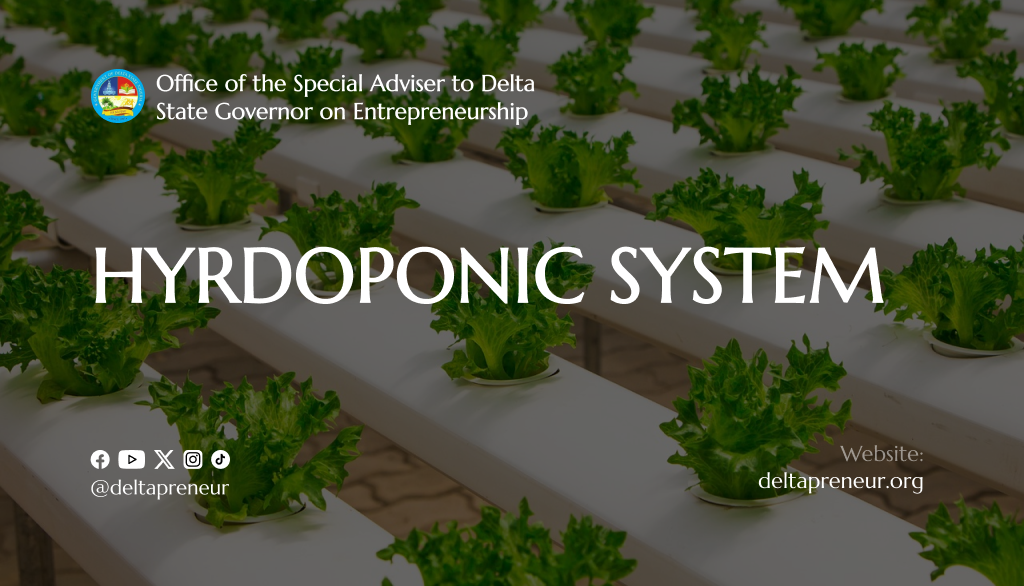Hydroponics and aeroponics are innovative farming techniques that allow for the cultivation of various fruits and plants without soil, using nutrient-rich water solutions. Here’s an extensive list of fruits and plants that can be grown through hydroponics and aeroponics farming systems:
- Leafy Greens: Lettuce, kale, spinach, arugula, Swiss chard, bok choy, and collard greens thrive in hydroponic and aeroponic systems due to their shallow root systems and fast growth rates.
- Herbs: Basil, cilantro, parsley, mint, chives, dill, oregano, thyme, sage, and rosemary are ideal for hydroponic and aeroponic cultivation, offering fresh flavours and aromas year-round.
- Tomatoes: Compact tomato varieties such as cherry tomatoes, grape tomatoes, and Roma tomatoes perform exceptionally well in hydroponic and aeroponic setups, producing high yields of flavorful fruits.
- Cucumbers: Dwarf cucumber varieties like English cucumbers and pickling cucumbers thrive in hydroponic and aeroponic environments, yielding crisp and juicy fruits throughout the growing season.
- Bell Peppers: Bell peppers, both green and coloured varieties, can be successfully grown in hydroponic and aeroponic systems, providing a steady supply of crunchy and sweet peppers for culinary use.
- Strawberries Strawberries are well-suited for hydroponic and aeroponic cultivation, producing plump and juicy berries with minimal space requirements, making them perfect for vertical growing systems.
- Microgreens: Microgreens, including broccoli, radish, mustard, kale, arugula, and amaranth, are popular crops in hydroponic and aeroponic setups, offering intense flavors, vibrant colors, and nutrient-rich leaves.
- Fruit Trees: Some fruit trees can be grown in hydroponic and aeroponic systems, albeit with specialized care. Examples include dwarf varieties of citrus trees (lemons, limes, oranges), fig trees, dwarf apple trees, and dwarf peach trees.
- Green Beans: Bush beans and pole beans can be cultivated hydroponically and aeroponically, providing a continuous harvest of tender and flavorful green beans for salads, stir-fries, and other dishes.
- Peas: Snap peas, snow peas, and sugar snap peas are suitable for hydroponic and aeroponic cultivation, offering sweet and crunchy pods that are perfect for snacking or adding to recipes.
- Melons: Some compact melon varieties, such as cantaloupe and honeydew, can be grown in hydroponic and aeroponic systems, although they may require additional support for their vines and fruits.
- Squash: Compact varieties of summer squash, including zucchini and yellow squash, can be grown hydroponically and aeroponically, providing a steady supply of tender and flavorful squash for cooking and grilling.
- Cabbage: Small-headed cabbage varieties, such as Napa cabbage and bok choy, can be successfully cultivated in hydroponic and aeroponic setups, offering crisp and flavorful leaves for salads, stir-fries, and slaws.
- Beets: Beetroot and beet greens can be grown hydroponically and aeroponically, providing a dual harvest of sweet and earthy roots and nutritious greens for culinary use.
- Radishes: Radishes, including traditional red radishes, daikon radishes, and watermelon radishes, are well-suited for hydroponic and aeroponic cultivation, offering crunchy and peppery roots for salads and garnishes.
- Carrots: Baby carrot varieties and other small-rooted carrot cultivars can be grown hydroponically and aeroponically, providing a continuous harvest of sweet and tender carrots for snacking and cooking.
- Celery: Compact celery varieties can be cultivated in hydroponic and aeroponic systems, offering crisp and flavorful stalks for salads, soups, and snacks.
- Onions and Scallions: Onions and scallions can be grown hydroponically and aeroponically, providing fresh and aromatic bulbs and greens for culinary use.
- Garlic: Garlic bulbs can be grown hydroponically and aeroponically, offering pungent and flavorful cloves for cooking and seasoning.
- Lettuce Varieties: Besides traditional lettuce varieties, hydroponic and aeroponic systems can also support the cultivation of specialty lettuce varieties such as butterhead lettuce, romaine lettuce, iceberg lettuce, and leaf lettuce.
- Spinach Varieties: In addition to traditional spinach varieties, hydroponic and aeroponic systems can also accommodate specialty spinach varieties such as baby spinach, savoy spinach, and New Zealand spinach.
- Cress: Watercress and upland cress can be successfully cultivated in hydroponic and aeroponic setups, offering peppery leaves for salads, sandwiches, and garnishes.
- Edible Flowers: Some edible flowers, including nasturtiums, pansies, violets, and marigolds, can be grown hydroponically and aeroponically, adding color, flavor, and visual appeal to culinary creations.
- Chilies and Hot Peppers: Compact chili and hot pepper varieties, including jalapenos, habaneros, Thai chilies, and serrano peppers, can be grown in hydroponic and aeroponic systems, providing fiery flavors for various dishes.
- Mushrooms: Certain mushroom varieties, such as oyster mushrooms and shiitake mushrooms, can be cultivated hydroponically and aeroponically, offering earthy flavors and nutritional benefits for culinary use.
- Ginger and Turmeric: Rhizomes like ginger and turmeric can be grown hydroponically and aeroponically, providing aromatic and flavorful roots for cooking, brewing teas, and making medicinal preparations.
- Lemongrass: Lemongrass can be successfully cultivated in hydroponic and aeroponic systems, offering citrusy flavors and aromatic leaves for seasoning soups, curries, and beverages.
- Papayas: Compact papaya varieties can be grown in hydroponic and aeroponic setups, providing tropical fruits with sweet and succulent flesh for fresh consumption or culinary use.
- Passion Fruit: Certain compact passion fruit varieties can be cultivated hydroponically and aeroponically, offering tangy and aromatic fruits for juices, desserts, and cocktails.
- Dragon Fruit Certain dwarf varieties of dragon fruit, also known as pitaya, can be grown in hydroponic and aeroponic systems, producing exotic fruits with vibrant colors and sweet flavors.
- Bananas: Dwarf banana varieties can be grown hydroponically and aeroponically, providing tropical fruits with a creamy texture and sweet flavour for fresh consumption or culinary use.
- Pineapples: Compact pineapple varieties can be cultivated in hydroponic and aeroponic setups, offering juicy and tangy fruits for fresh consumption or culinary use.
- Avocados: Dwarf avocado varieties can be grown in hydroponic and aeroponic systems, providing creamy and nutritious fruits for guacamole, salads, sandwiches, and other dishes.
Stay Connected with Deltapreneur
Follow us onFacebook
Follow us onTwitter
Follow us onInstagram
Watch our latest videos onYouTube

